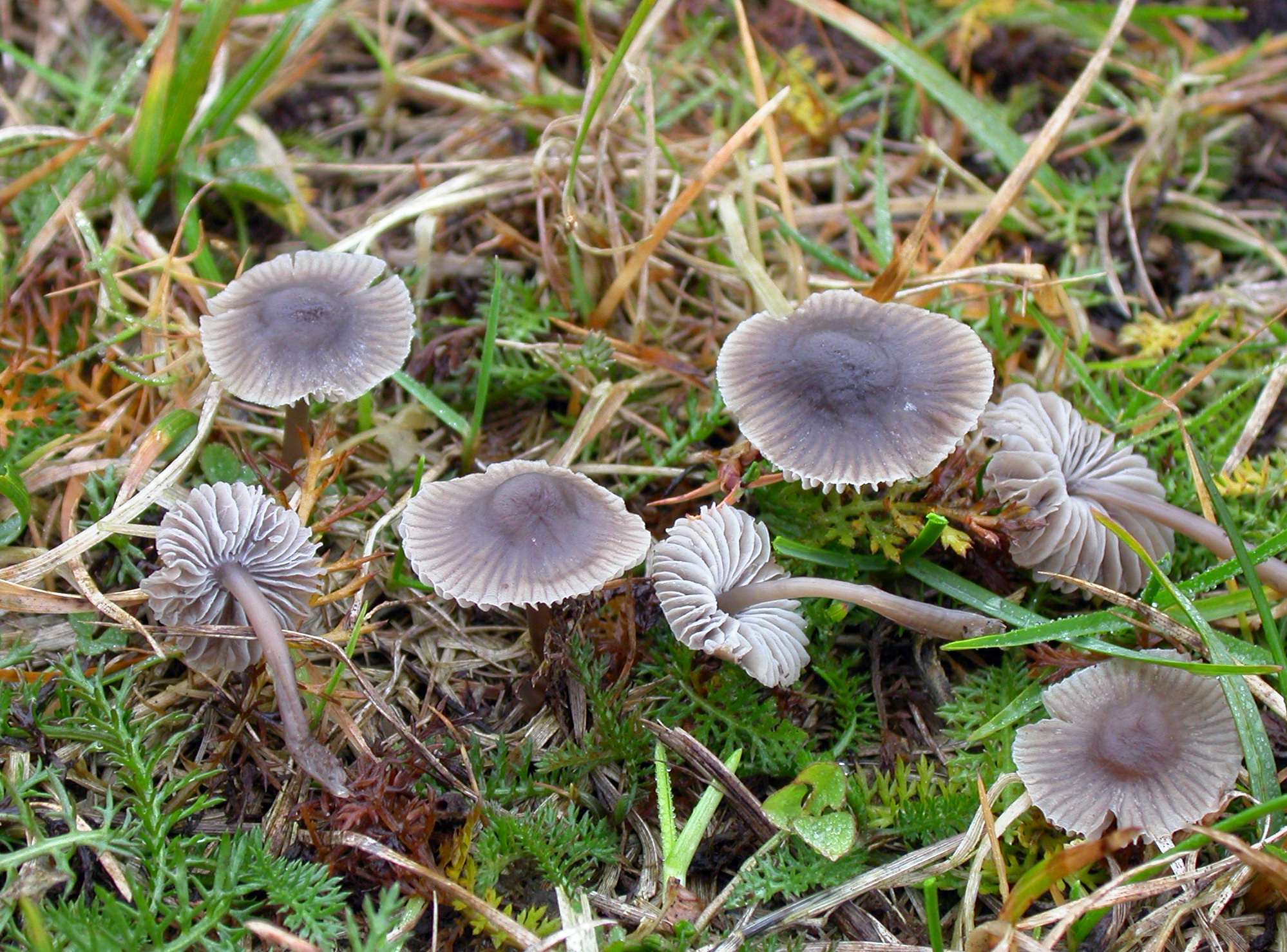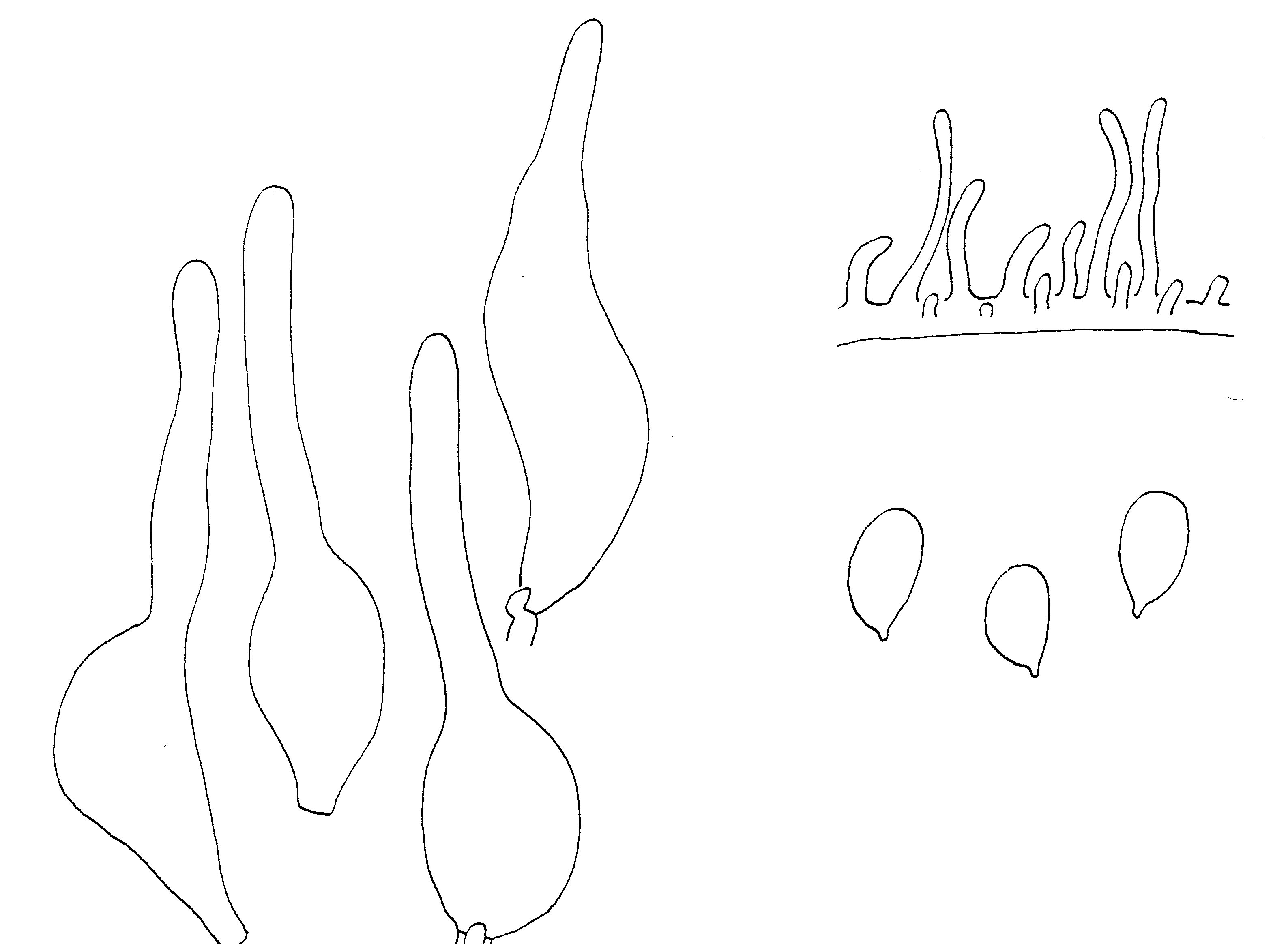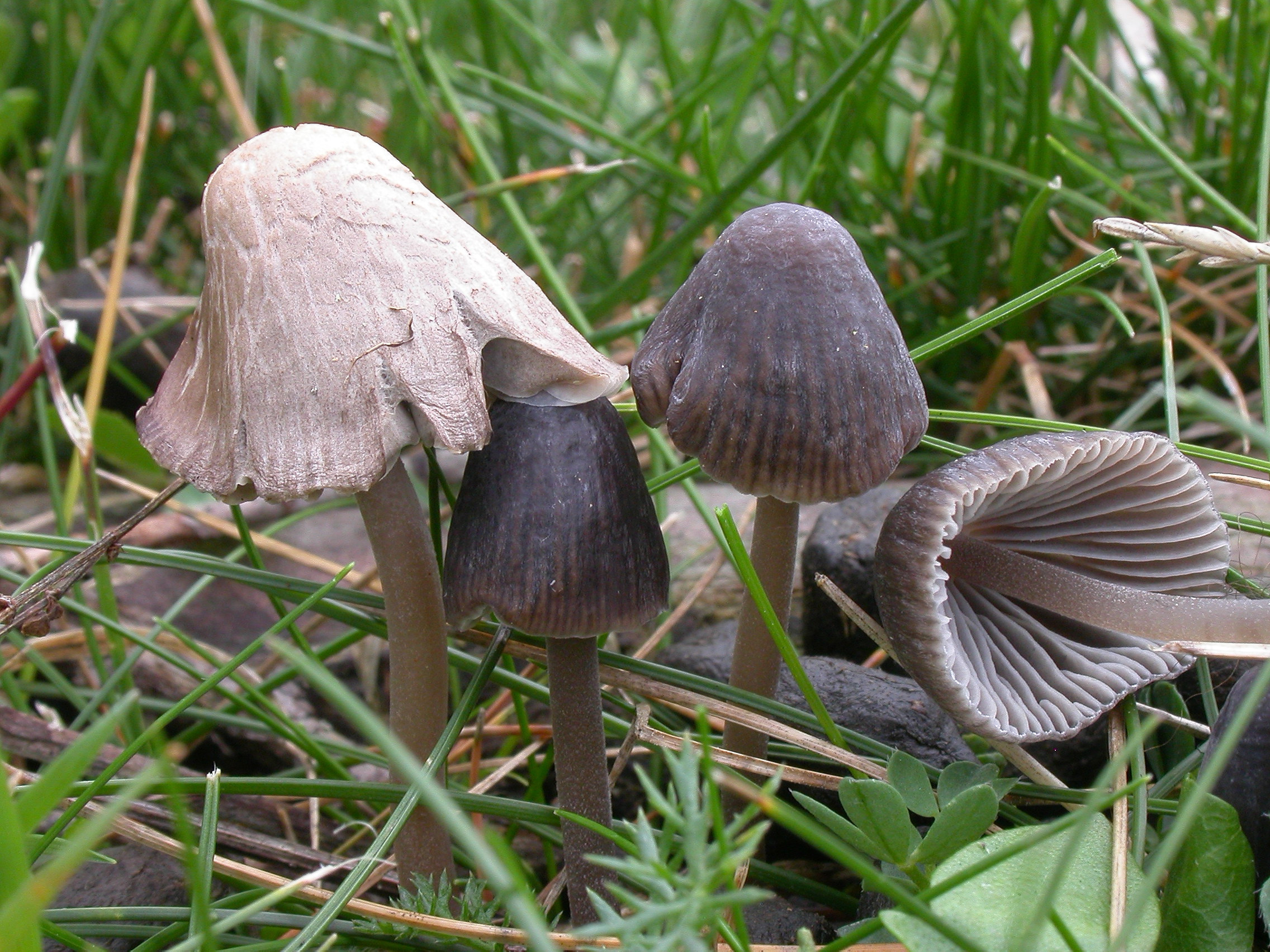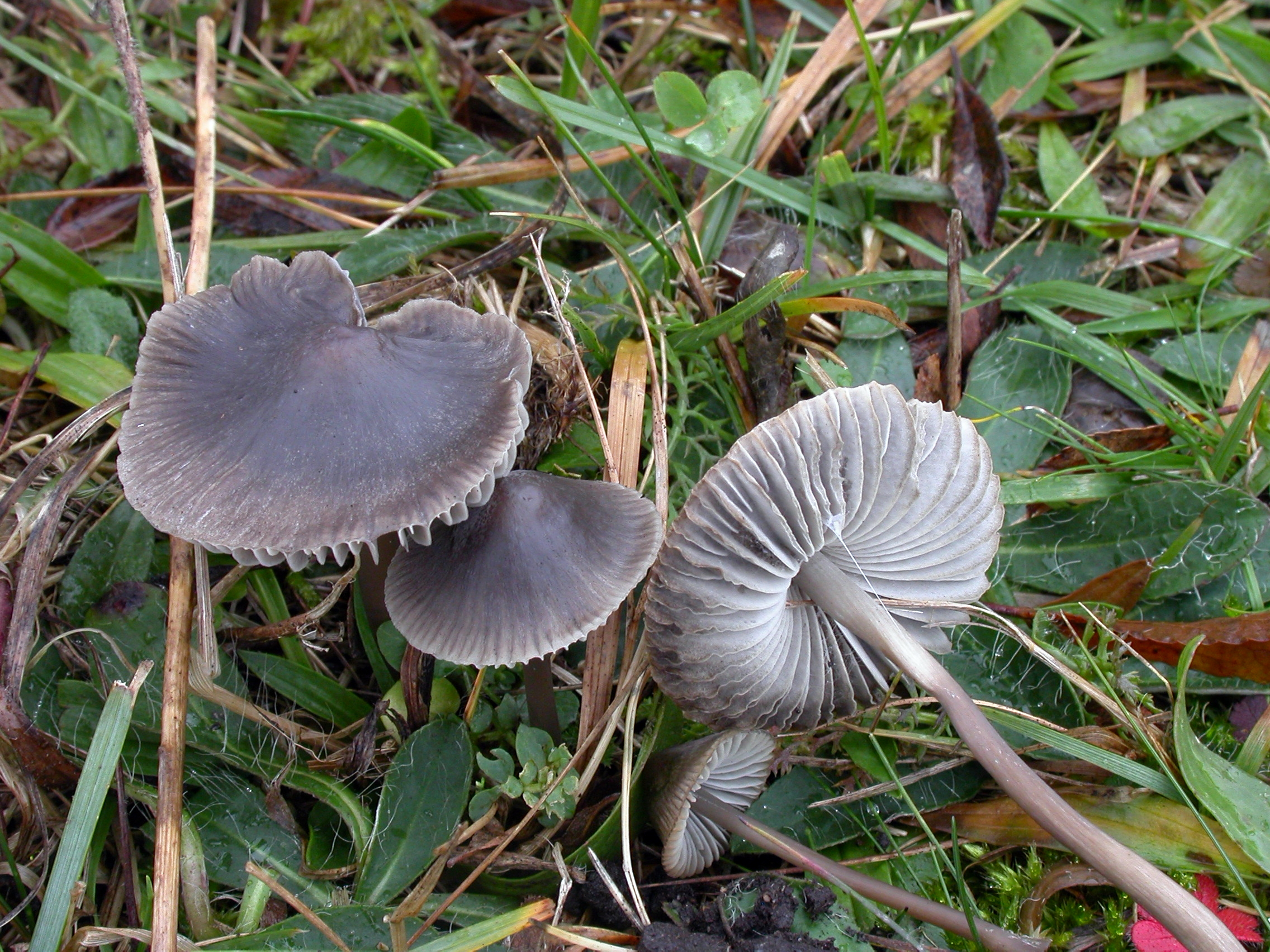Mycena parca
Mycena parca
Description
Cheilocystidia, hypha of the pileipellis and spores.
Cap 7-30 mm across, conical, parabolical, convex to plane, usually with a prominent, obtuse umbo, sulcate, translucent-striate, hygrophanous, at first pruinose, glabrescent, brownish black to dark brownish grey with a blackish centre, fading to grey, margin grey to whitish. Gills 17-26 reaching the stem, adnexed, with or without a short tooth, somewhat rugulose and dorsally intervenose with age, grey to dark grey with paler to white edge. Stem up to 60 x 3 mm, fragile, cylindrical, with age sometimes flattened, and occasionally somewhat fissured lengthwise, equal or somewhat broadened below, glabrous, becoming shiny, apically pale grey, brown to grey-brown below, becoming entirely grey, the base covered with long, coarse, flexuous, whitish fibrils. Odour indistinctive or nitrous. Taste strong, nitrous or somewhat rancid. Basidia c. 27 x 7 µm, clavate, 4-spored, with sterigmata c. 7 µm long. Spores 7-9 x 4.5-6 µm, Q = 1.3-1.7, Qav ˜ 1.6, pip-shaped, amyloid. Cheilocystidia 38-68 x 0-16 x 2.5-5 µm, forming a sterile band, lageniform, smooth. Pleurocystidia similar, not numerous. Lamellar trama dextrinoid. Hyphae of the pileipellis 2.7-4.5 µm wide, not very densely covered with cylindrical, curved to flexuous excrescences 4.5-18 x 1.8-2.2 µm. Hyphae of the cortical layer of the stem 1.6-3.5 µm wide, smooth, terminal cells scarce, 45-65 x 5.5-7 µm, clavate. Clamps present in all tissues.
Ecology and distribution
Gregarious among needles under Juniperus communis in grassland or on open lawns. Autumn. Recorded from two localities in South East Norway.



